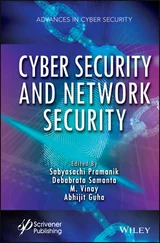To restore Active Directory on a domain controller and enable the restored data to be replicated throughout the network, follow these steps:
1.Make sure the domain controller server is shut down.
2.Restart the domain controller server, and enter safe mode.
3.Select Directory Services Restore Mode.
4.When the system starts, use the Backup utility to restore the system state data and other essential files.
5.After restoring the data but before restarting the server, use the Ntdsutil.exe tool to mark objects as authoritative. Be sure to check the Active Directory data thoroughly.
6.Restart the server. When the system finishes startup, the Active Directory data should begin to replicate throughout the domain.
Restoring the operating system and the full system
As discussed previously, Windows Server 2012 R2 includes startup repair features that can recover a server in case of corrupted or missing system files. The startup repair process can also recover from some types of boot failures involving the boot manager. If these processes fail and the boot manager is the reason you cannot start the server, you can use the Windows Server 2012 R2 installation disc or system recovery options to restore the boot manager and enable startup.
System recovery options are available only with full server installations and not with Server Core installations. With Server Core installations, you need to use the installation disc to initiate recovery.
System recovery options include the following tools:
■ System Image RecoveryEnables you to recover a server’s operating system or perform a full system recovery. With an operating system or full system recovery, make sure your backup data is available and that you can log on with an account that has the appropriate permissions. With a full system recovery, keep in mind that data that was not included in the original backup will be deleted when you recover the system, including any in-use volumes that were not included in the backup.
■ Windows Memory Diagnostics ToolsEnables you to diagnose a problem with the server’s physical memory. Three different levels of memory testing can be performed: basic, standard, and exhaustive.
You can also access a command prompt. This command prompt gives you access to the command-line tools available during installation in addition to these other programs:
■ Startup Repair Wizard (X: \Sources\Recovery\StartRep.exe)Typically, this tool is started automatically on boot failure if Windows detects an issue with the boot sector, boot manager, or Boot Configuration Data (BCD) store.
■ Startup Recovery Options (X: \Sources\Recovery\Recenv.exe)Enables you to start the Startup Recovery Options Wizard. If you previously entered the wrong recovery settings, you can provide different options.
As an administrator, you can perform command-line troubleshooting by following these steps:
1.If the computer won’t start as usual, the Recovery screen is displayed during startup. On the Recovery screen, tap or click Troubleshoot.
2.On the Advanced Options screen, tap or click Command Prompt.
3.When prompted to choose an account, tap or click the Administrator account. Next, enter the password for the Administrator account, and tap or click Continue.
4.Use the command prompt to perform troubleshooting. For example, you could run the Startup Repair Wizard by entering x: \sources\recovery\startrep.exe.
You can recover a server’s operating system or perform a full system recovery by using a backup image you created earlier with Windows Server Backup. With an operating system recovery, you recover all critical volumes but do not recover nonsystem volumes. If you recover your full system, Windows Server Backup reformats and repartitions all disks that were attached to the server. Therefore, you should use this method only when you want to recover the server data onto separate hardware or when all other attempts to recover the server on the existing hardware have failed.
NOTE When you recover the operating system or the full system, make sure that your backup data is available and that you can log on with an account that has the appropriate permissions. With a full system recovery, keep in mind that existing data that was not included in the original backup will be deleted when you recover the system. This includes any volumes that are currently used by the server but were not included in the backup.
You can recover the operating system by using a backup image by following these steps:
1.If the computer won’t start as usual, the Recovery screen is displayed during startup. On the Recovery screen, tap or click Troubleshoot.
2.On the Advanced Options screen, tap or click System Image Recovery.
3.When prompted to choose an account, tap or click the Administrator account. Next, enter the password for the Administrator account, and tap or click Continue. This starts the Re-Image Your Computer Wizard.
4.On the Select A System Image Backup page, tap or click Use The Latest Available System Image (Recommended), and then tap or click Next. Or tap or click Select A System Image, and then tap or click Next.
5.If you select an image to restore, do one of the following on the Select The Location Of The Backup page:
■Tap or click the location that contains the system image you want to use, and then tap or click Next. Afterward, tap or click the system image you want to use, and then tap or click Next.
■To browse for a system image on the network, tap or click Advanced, and then tap or click Search For A System Image On The Network. When you are prompted to confirm that you want to connect to the network, tap or click Yes. In the Network Folder text box, specify the location of the server and shared folder in which the system image is stored, such as \\FileServer22\Backups, and then tap or click OK.
■To install a driver for a backup device that doesn’t show up in the location list, tap or click Advanced, and then tap or click Install A Driver. Insert the installation media for the device, and then tap or click OK. After Windows installs the device driver, the backup device should be listed in the location list.
6.On the Choose Additional Restore Options page, do the following optional tasks, and then tap or click Next:
■Select the Format And Repartition Disks check box to delete existing partitions and reformat the destination disks to be the same as the backup.
■Select Only Restore System Drives to restore only the drives from the backup that are required to run Windows: the boot, system, and recovery volumes. If the server has data drives, they will not be restored.
■Tap or click Install Drivers to install device drivers for the hardware to which you are recovering.
■Tap or click Advanced to specify whether the computer is restarted and the disks are checked for errors immediately after the recovery operation is completed.
7.On the Confirmation page, review the details for the restoration, and then tap or click Finish. The wizard then restores the operating system or the full server as appropriate for the options you selected.
Restoring applications, nonsystem volumes, and files and folders
Читать дальше






